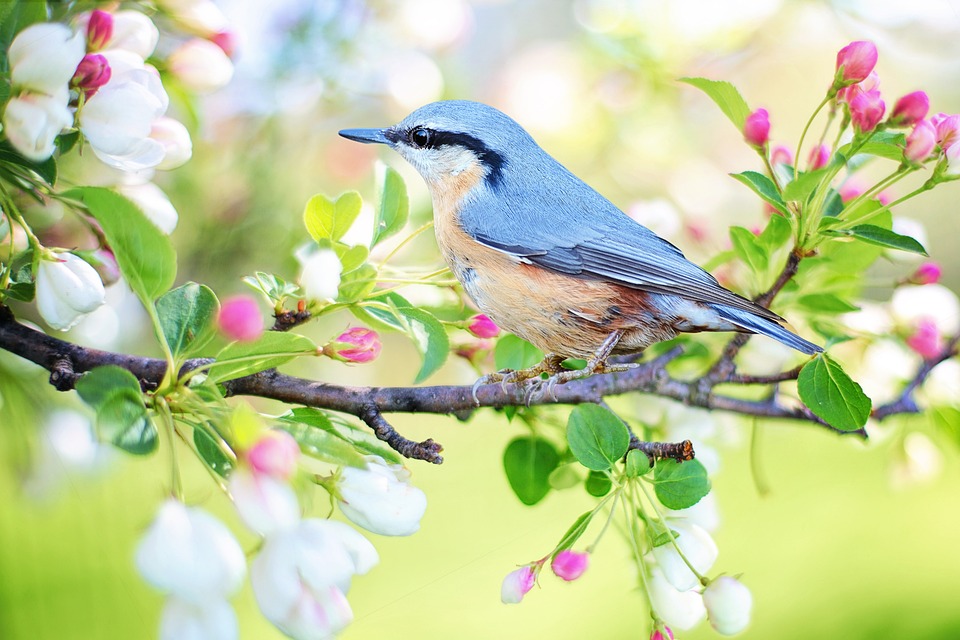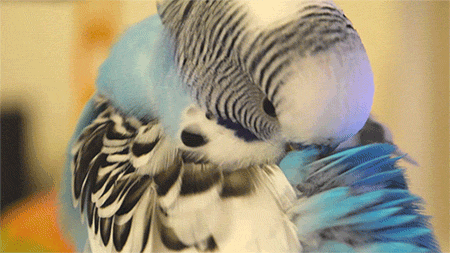Birds

Birds (Aves) are common pets in the United States. A bird’s ideal habitat offers warm, dry shelter, as well as numerous opportunities to obtain nutritious food and clean water. A bird’s diet mostly consists of seeds, insects, and berries/fruits. When kept as pets, in addition to the requirements mentioned above, birds need toys for enrichment and entertainment. Since pet birds do not have the same access to a diverse variety of materials as wild ones do, providing a nest or nesting material is also highly recommended. Birds come in a great variety of colors and sizes, though only some, like budgies, are allowed as pets. Depending on the bird’s breed and living conditions, its life expectancy can fluctuate anywhere from 6 years (like budgies) to 75 years (macaws), so long term commitment is an essential consideration when planning for these animals.
The most obvious form of bird communication is their vocalization, each sound having a unique meaning. As one does not typically speak their language, it is necessary to take note of any other behaviors or details the birds display. As one gets to know the birds, clear patterns will emerge, and one will gain deeper understating of one’s pets.


A commonly observed behavior is preening, which is when a bird extends its feathers to clean them. Birds will occasionally display aggression when defending themselves, their nest, their young, and their territory. A solution to the territorial aggression is to move the bird and its habitat to a neutral location and gently and slowly begin approaching it, offering treats and positive reinforcement; once progress has been made, begin handling it.
If not provided with sufficient mental stimulation, birds will begin displaying stress and will move on to undesirable behaviors like being destructive, biting owners, and plucking out its feathers. If a greater variety of toys and positive reinforcement for good behaviors do not aid in improving the bird’s disposition, a visit to an exotic animal veterinarian is in order. On the other hand, a bird will show its happiness and appreciation by being relaxed and acting playful towards its owner. A bird’s contentment will also show in its healthy and well-kept physical appearance, as clean, shiny feathers indicate the animal is in good health and lives in a stress-free environment.